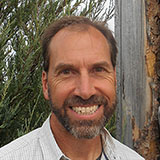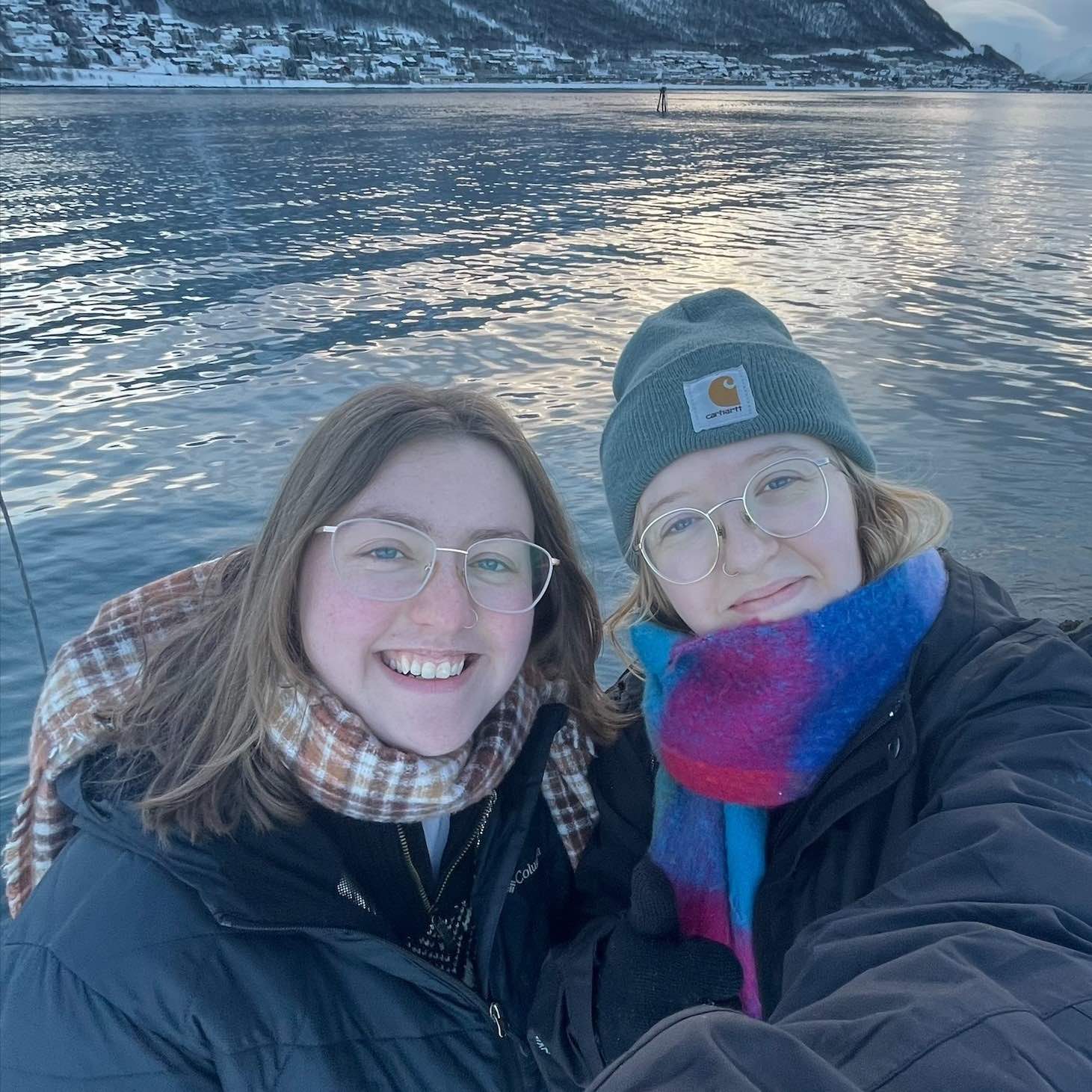
Professor of Biological Sciences, Dr. Scott Franklin, discusses the human and natural impact of fracking, wildfires, and insects have on our climate.
My name is Scott Franklin. I am a professor in the school of biological sciences
I went to actually a really small school in Iowa and I wanted to be a park ranger. When I found out that park Rangers were basically sheriffs, I dimmed in that view of wanting to be a park ranger and I started looking around for what else was possible. I was lucky enough to land a spot in a masters department doing forest ecology. Fell in love with doing research in ecology and have been doing it ever since.
What, what made you even want to become a park ranger? Were you just an outdoorsy person?
Very much so. We went camping every weekend in the summer when I was a kid. Fishing, camping, hiking. That was all part of my growing up.
Great. And now that you're here at UNC, what are you studying? What are you researching?
It's still mostly ecology. I focus on disturbances and the responses of plant communities to those disturbances.
What are some examples of some disturbances?
So we've examined general succession in Rocky Mountain National Park. We had plots that were taken back in the early 1970s and we were able to re sample those and see what the changes over time. So that was more in line with how are these forests changing with climate change. Uh, we've also looked at small fires and flooding that have occurred in the area, I should say small data of bigger fires and flooding that have occurred in the area, the 2012 and 2013 episodes that we had here, right outside of Fort Collins. And then fracking. We were also looking at fracking on the short grass step and the impacts of fracking and, and can short grass step be reintroduced and recovered following those fracking events cause the wells are abandoned and reclaimed after they are done.
You say short grass, can you explain what that is where?
Yeah, so most of what we have East of the foothills are short grass dominated systems. So it basically goes as you move from the mountains here in the Rockies to the Appalachians. You go from short grass to mixed grass to tall grass to forest. And it's basically an increase in the precipitation that allows for bigger plants to, so, we're in the short grass area. This is the Pawnee national grasslands that's in the Northeastern part of Colorado. That's where this work is. It's part of weld County and weld County is the biggest producer of oil and natural gas in the state and one of the biggest in the country. So, there are, I don't know, 60,000 or so Wells I think in Weld County alone.
Would you say right now that's currently?
Yeah, there's a lot.
Wow. Okay. Quick question on that. When it comes to fracking, how long is one well, in one spot, cause I know, you know, once it's done they, they move to the next spot.
It depends, most of the production they get from any fracking well they put in is within the first decade, and they usually go back in that after that decade and look to see if fracking more would get more product for them. And if not, they just let it go. Otherwise, they potentially will refrack that same site again. Most eells in 30 to 50 years are pretty much done with what they can deliver and so they're plugged, abandoned and that site is reclaimed.
Okay. And reclaimed is basically they're over with it. And then is that when you go in and take samples?
Well, our question is for those that had been plugged and abandoned, are they recovering to natural communities now?
Gotcha.
So in some cases we are looking at those that were plugged in abandoned 10 years ago in other cases 30 years ago. And for the most part, quite a few of those species come back, which is really nice. It's not greatly different than the natural communities. But it's certainly not exactly what you find in the natural communities. It will take, the estimate is 80 to a hundred years for it to really rebound from those sites.
What about the, the radius of say one site?
Yeah. And it used to be a lot bigger. So you know, fracking has been around for, I don't know, 60, 70 years I think on the Pawnee. And the sites used to be a little bit bigger. The technology, those sites get smaller and smaller, which is really nice. Some of the sites that we were working on 50 meters away, you're in natural grassland and the cows are grazing right there, which is another question, but the fact is those pads as they put on the well pads are really not huge, which is good. It's just there's so many of them and so, um, as long as they're done correctly. So the companies will come in, they'll remove the top soil, they'll put in place their well pad. When they're done, that top soil goes back on. And hopefully it goes back to short grass Prairie.
Yeah, that's great to know. I had no idea actually how much, how far, how much of an impact. Moving to the idea of looking at the damages done, what, what would be the proper way other than damages that the best verbiage?
Well, it's alteration at least, right? So, um, I mean damage is a, is a tough word to use, right. Natural disturbances I think because most of these organisms are evolved to some type of disturbance and so this is just kind of a land clearing that takes place for a little while and as long as it's just a small spot on the land, then hopefully you can have colonization onto that site and you can even plant onto that site and you should be able to get, that natural vegetation back again within 80 to a hundred years. I think where contamination occurs is the bigger question and if contamination occurs and companies are supposed to clean that up but you know, it's never a perfect kind of science in that sense.
Before we hit record on this, you were mentioning your research on the Western Slope.
Yeah.
Would you mind going into a little bit about that?
Sure. So this is on the sagebrush of the Western part of Colorado. There are a huge number of types of Sage brush. There's Wyoming Sage brush and basin Sage brush and black Sage brush. And there's a huge expanse of Sage brush all the way from the Western Slope of Colorado to the Eastern slope of the Sierra Nevadas, just all part of that inner mountain basin. Very important habitat for grazing lands and for sagebrush grouse and several other endangered species. So the BLM, the Bureau of Land Management has a lot of interest in maintaining this habitat and restoring the habitat whenever disturbances come through. Those disturbances in some cases have increased because we have exotic species that come into the Sage Brush systems, and so fires become more frequent. The Sage brush doesn't have as much time to respond. So that's partly where restoration comes in to try and speed up that rest rate, the process of getting back the native plants.
What is starting these fires, if they're so easy to ignite? What's, what's like the unusual causes of these?
I think it's mostly human caused by error. Uh, I think lightning is clearly a source in many cases and has been naturally for a very long period of time. And the railway was quite a part of that for a period of time as it was being put in. I don't think it is as much now with technology as it's changed. But mostly I believe their human caused at this point.
And that kind of is a nice segue into what's going on on the other side of the globe, which is in Australia.
Yeah. So Australia is seeing what we'd call a major outbreak of fires and it's actually kind of a perfect storm is typical when we get large scale disturbances to occur. So, all disturbances tend to be tied to some kind of other set of events that are going on. So fires are tied to droughts that occur and droughts occur periodically, naturally on a regular basis. So that was one of the things that was going on in Australia is this kind of oscillation that occurs with their weather and patterns. This particular oscillation was a strong one and tends to lead to higher temperatures and lower moisture for the continent as a whole for Australia as a whole. In addition to that, they had another kind of weather pattern, the polar winds coming from Antarctica, which also tend to decrease the amount of precipitation falling on Australia. That happens much less often, but the two happening together is even more rare. And kind of the third thing on top of that is global warming, which has led to hotter and drier conditions on the continent as well. So those three things together basically created an entire continent that was ready to burn. Unlike usual, where you might have patches of that continent that are ready to burn, because they're dry for that particular year. It's pretty unusual to have a whole really large area like that. And it's because of these large climate patterns that create that possibility. So what's unusual, is not that fires are occurring because that whole continent is burned several times. Species are very much adapted to it. What's unusual is that the amount of area that's burnt. So we often worry a little bit about endangered species and where these endangered species are in their populations. And typically disturbances will come through and they may impact part of that population, but not all of it. And what's kind of crazy about Australia right now is that there are communities and habitats of endangered species where all of it has burnt. So in this case, there's basically no remnant left that's in a vegetative state. So where animals may have moved to other habitat and wait it out and then move back after the fire burned area recovers, there's just no other place to go that has that habitat. So that's what they're dealing with right now that's really making this a little scarier than other disturbances we've seen. So the question is, are these kinds of events going to start to become more frequent? And so if those events become more frequent, the droughts become more frequent and then the fires become more frequent.
So that's what we're predicting, most climate scientists I should say, are predicting for the future. And then the other big question I guess with Australia and how much area is burned is that's a lot of carbon that's gone up in the atmosphere. And so that's one of the main sources for global warming, and so it could actually have a feedback negative effect as well.
Are there any parallels that you see with what's going on with those oscillations? Like these outliers that are abnormal with the fires that are going on, say on the Western Slope?
Not that I've seen with the fires on the Western slope recently. I think the more, the more correlated would be the major insect outbreak that we had. So the pine beetles that came through and the pine beetles that are coming through now on the spruce beetles that are coming through now. So that was part of a long drought that was occurring, warmer winters that were occurring, longer growing seasons that were occurring. So what you ended up with were trees that were stressed, and their main way of making sure the Beatles did not get into them and attack them was to pitch out that Amber that is pitched out to try and get rid of the insects. And if they don't have the moisture to do that, they can't defend themselves. So the plants were stressed because of the drought. The insects, fewer of them died over winter because the winters were mild. That's part of climate change. Uh, the longer growing season, in some cases the Beatles were able to reproduce twice. So there's that many more Beatles. And then kind of the third part of this is that from the late 1800s to middle 1900s, most of the Western slopes and the slopes of the Rocky mountains were cut. So it was all one giant monoculture of lodgepole pine, the main host for this beetle that was attacking in the late 1900s and early two thousands here during the drought. And so it started in British Columbia and just had no problem coming all the way down. There's food sources, no problem getting from one host to another. It was just, again, kind of a perfect storm of events that created this huge outbreak from a native beetle that has had outbreaks many times in the past, but much more patchy.
If you're interested in learning more about the biology or the ecology of Colorado area, we have a really fun program here, a biology and a bunch of great faculty. We all collaborate together and trying to answer questions all the way from, uh, can we find some cancer killing agents in the venom of snakes? to Where did bats come from? Did they come from an arboreal Shrew or a ground Shrew or maybe from both. That's what gives us these two different kinds of bats. To understanding and even to understanding the genetics of marijuana. So we're doing a lot of really cool stuff in this department. It's a fun place to be. So come visit us anytime.





